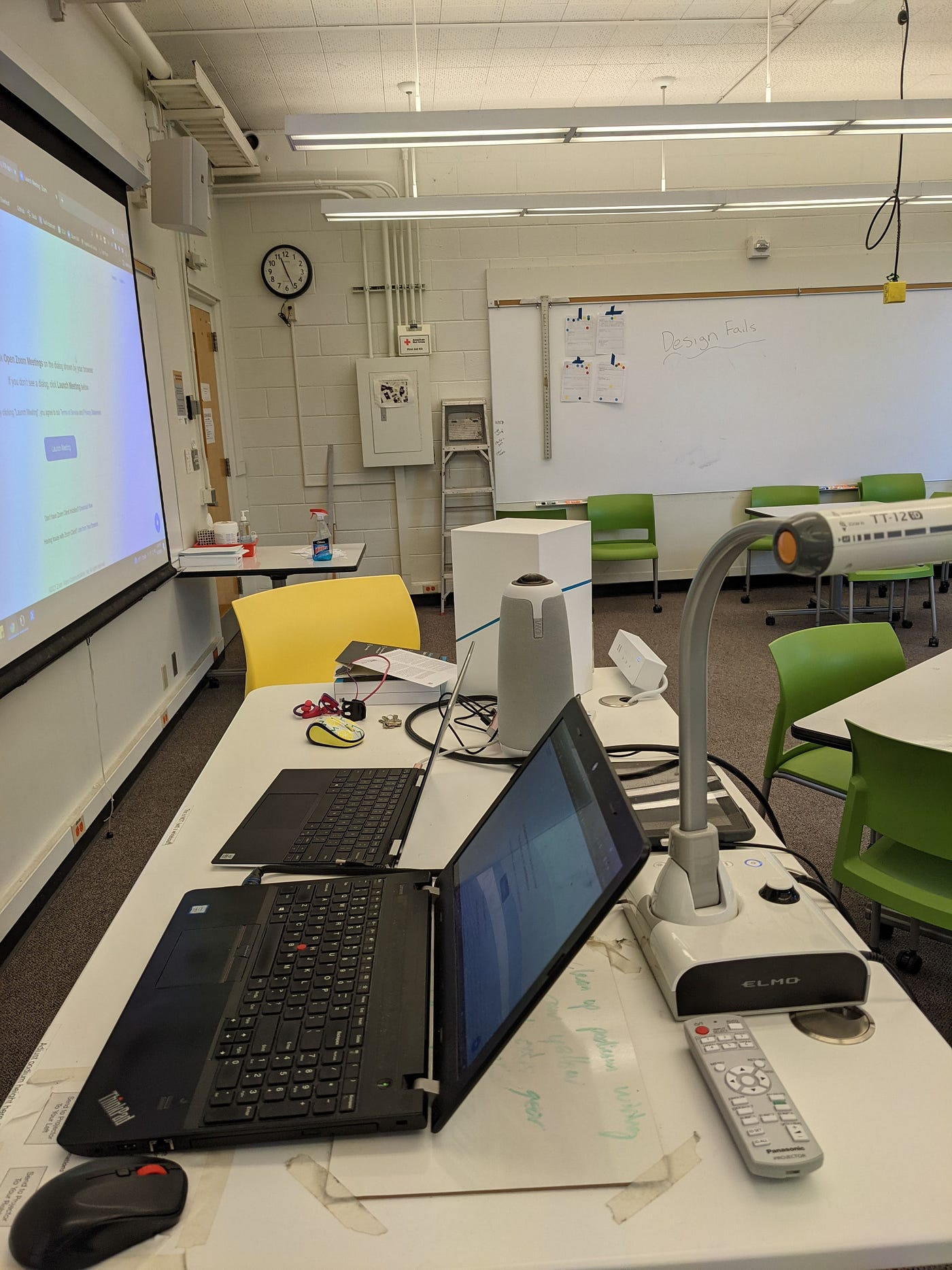Teaching a Hybrid class in a University setting
Published:

As my first in-person quarter of grad school at the University of Washington wraps up, I’m taking this opportunity to look back at one of the largest components of my past quarter: teaching a hybrid class.
Since my second quarter at UW, I have been a Teaching Assistant for an undergraduate course in my department, titled ‘HCDE 318: Introduction to User-Centered Design’. The course offers a hands-on experience of the user-centered design process as they take on a 10-week group project from ideation and user research to hi-fi prototype and user testing. While my first two quarters of teaching this course was fully online, Fall 2021 brought about the exciting prospect of an in-person/hybrid model.
The preparation for the course started a week before the first day of class, when the professor and I met to discuss alterations to the formerly-remote course to the hybrid format. This was made smoother by the fact that this was the same professor with whom I had been teaching the past two quarters, meaning that we had already established a good rapport with each other. This made the conversation about planning a lot smoother, and the upcoming difficulties easier to manage.
At the very onset, we faced the challenge of setting up the hybrid classroom. The room was one of the department's Educational labs, designed for highly collaborative project-based courses. It consists of two independent projectors, screens, speakers, whiteboard walls and tables, and an assortment of prototyping supplies. We were also granted access to a hybrid-meeting accessory: the Meeting Owl Pro. The mic, camera and speaker device would be integral to developing the hybrid experience since it was capable of following a speaker as they moved around.
We envisioned a setup where one of us would setup and display the Zoom room on one screen, and the other would display the instructional content on the other screen, while also screen-sharing on Zoom. However, this was far easier said than done. After six hours of combining our three engineering degrees and consulting with the department’s Computing Manager, we were able to come up with a reliably-replicable process of setting up the classroom on a regular basis within a short amount of time.
As TA, I took up the bulk of the responsibility of managing the setup. On the first day of class, I arrived half an hour early, nervous to execute the fragile setup in a live setting. It went off without a hitch, as we observed a fully in-person attendance. As the quarter progressed, the true capabilities of our hybrid setup were tested as the class self-organized into a 50–50 split across in-person and remote attendance. On some days, there were technical difficulties, some of which were not resolvable at the given time, but we adapted to the situation and still managed to pull off a successful class.
A big chunk of the credit for what I would like to think was a successful quarter is down to our students. They adapted wonderfully to the hybrid situation, leveraging the appropriate affordances for their benefits at any given time. When the technology was being difficult, they were accommodating. When we were doing in-class group time, in-person and remote students working on group projects found innovative ways to coordinate and work together. If not for their patience and contributions, the quarter would not have been successful.
As I reflect on the hybrid teaching environment this past quarter, I look back upon some of the successes and failures of my first time doing this. I look forward to learn from this experience and create a better learning environment next quarter, as I become lead instructor for this course!
